Landscaping Trends for 2026: What’s Up & Coming in Outdoor Design
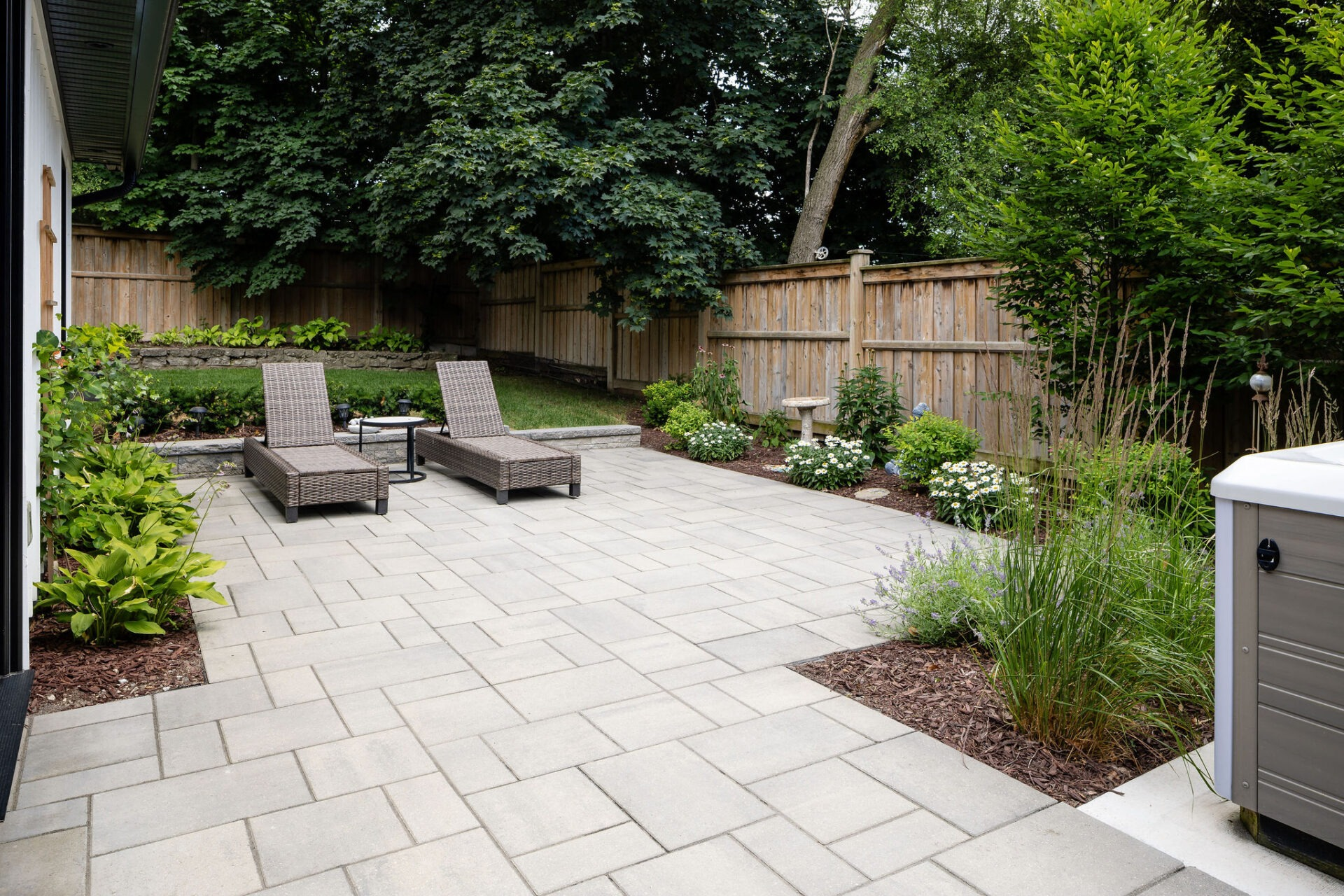
Keeping up with landscaping trends for 2026 helps you plan a yard you’ll love living in. Homeowners in Kitchener‑Waterloo want spaces that look good and feel good to be in, and the best way to achieve that is by knowing which ideas are on the horizon. If you’ve ever walked through your neighbourhood and felt like everyone else has figured out something you haven’t, you’re not alone. Many residents are looking for practical guidance on how to create functional, resilient landscapes that don’t feel outdated in just a couple of years.
At Kerr & Kerr Landscaping, we follow industry research and local feedback so you don’t have to wade through trend reports on your own. We’ll share ideas that resonate with our area’s climate and culture. You’ll see how new concepts such as edible garden design, rainwater‑wise planting, and smart‑tech integration can translate into beautiful yards across Waterloo Region. With each section, you’ll gain insights you can apply right away, whether you’re planning a full renovation or just tweaking your back patio.
Which Landscaping Trends in 2026 Are Shaping Kitchener‑Waterloo Yards?
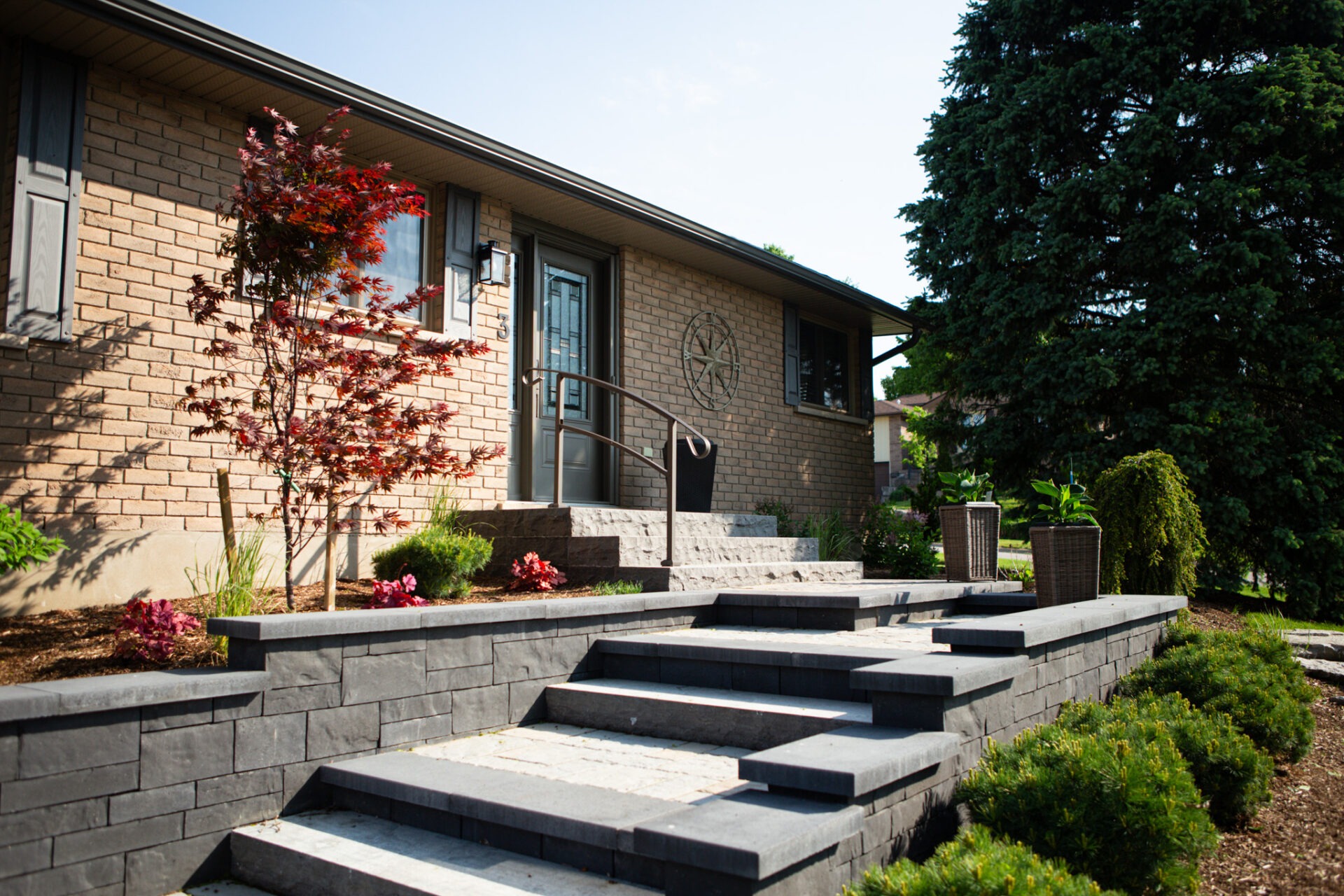
Kitchener‑Waterloo homeowners are embracing a mix of global and local trends, and the result is a landscape scene that feels both modern and rooted in place. Research for 2026 shows a continued push toward spaces that seamlessly blend with indoor rooms while supporting wellbeing and biodiversity. In our region, you see this through porous patios surrounded by native plants and rain gardens. People want areas to entertain, relax, and grow food without high maintenance, so designs often feature layered planting beds that hide edible crops among perennials.
There’s also a notable shift toward multi‑functional outdoor zones. Imagine a deck that doubles as a yoga studio in the morning and a dinner space at night, or a sunny corner with raised beds and a sculptural rain barrel. Kitchener actively encourages pollinator gardens, and many clients ask us to include pollinator‑friendly meadows or pockets of wildflowers for bees and butterflies. Smart sensors and Wi‑Fi‑enabled lighting are quietly integrated, but the emphasis remains on sustainability and a natural look rather than gadget‑driven showpieces. The overall message? Personalize your yard, build ecological value, and make sure every square foot serves a purpose.
Outdoor Living Rooms & Kitchens: What’s New for 2026?
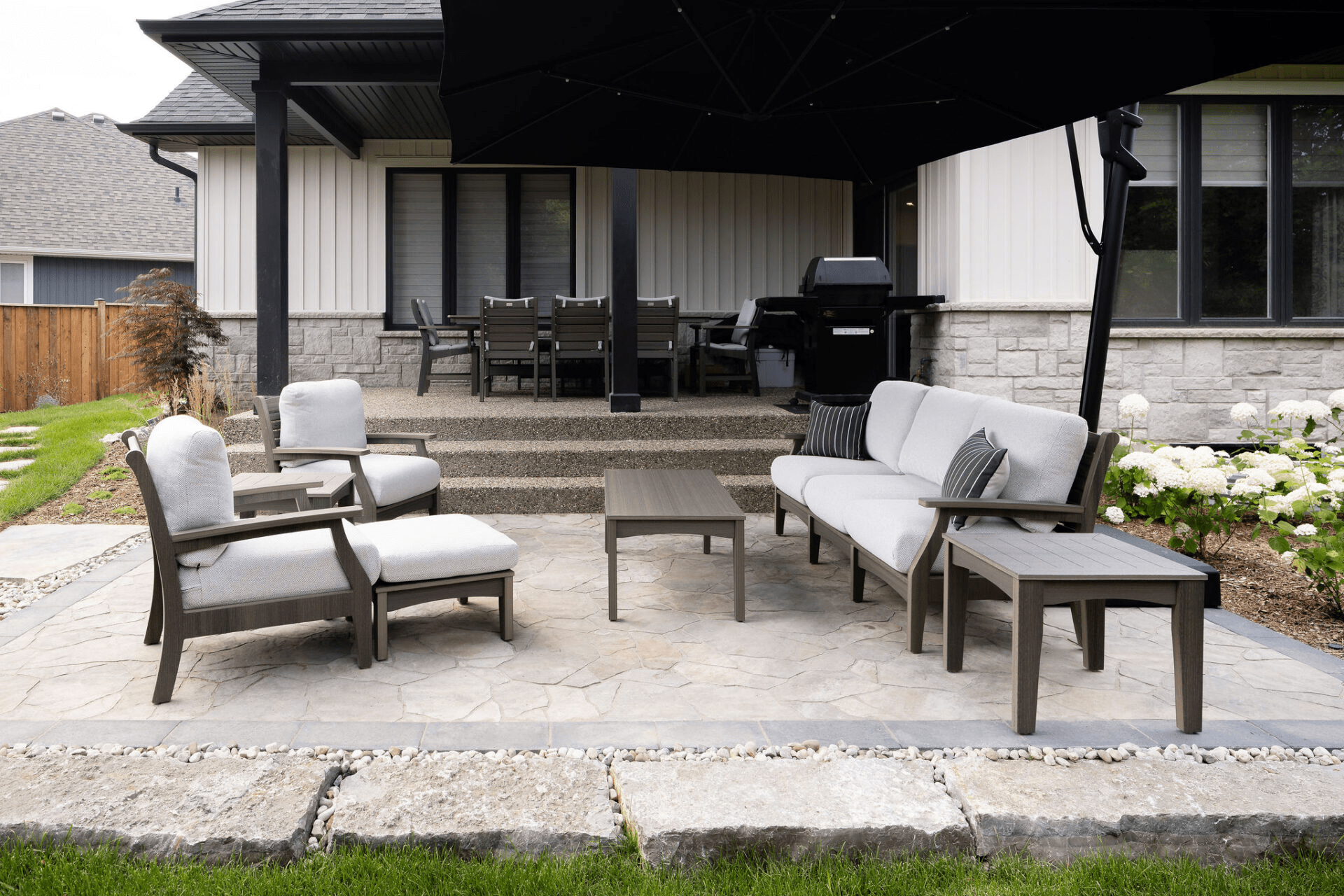
Outdoor rooms aren’t a fad; they’re evolving. The latest reports show a move away from sprawling outdoor kitchens toward compact, cohesive cooking zones that blend seamlessly with patios and decks. If you’re dreaming of alfresco dining, consider these ideas:
1. Integrated cooking stations. Instead of a standalone grill, opt for built‑in cabinetry that includes a small fridge, prep space, and a pizza oven. These setups take up less space and look more like furniture than appliances.
2. Covered lounges. K‑W’s climate can change quickly, so pergolas with retractable canopies or slatted roofs let you enjoy your patio even in light rain. Add outdoor heaters to extend the season.
3. Indoor comforts outside. Soft seating, throw pillows, and weather‑resistant rugs make patios feel like rooms. Earth‑toned fabrics and organic textures tie the space to the surrounding gardens.
4. Zoned lighting. Low‑voltage LED fixtures and lanterns create ambiance without glare. Pathway lights guide guests safely while string lights add charm.
When planning an outdoor living area, think about how often you’ll cook or host and whether you need a full suite of appliances. Many of our clients choose a simpler setup with a barbecue, prep counter, and dining table, investing instead in landscaping that frames the room. Plants that thrive in containers (ferns, grasses, and herbs) soften hard surfaces and make a small patio feel lush.
How Can We Adapt Low‑Water, Sustainable Design to K‑W’s Rainy Ontario Climate?
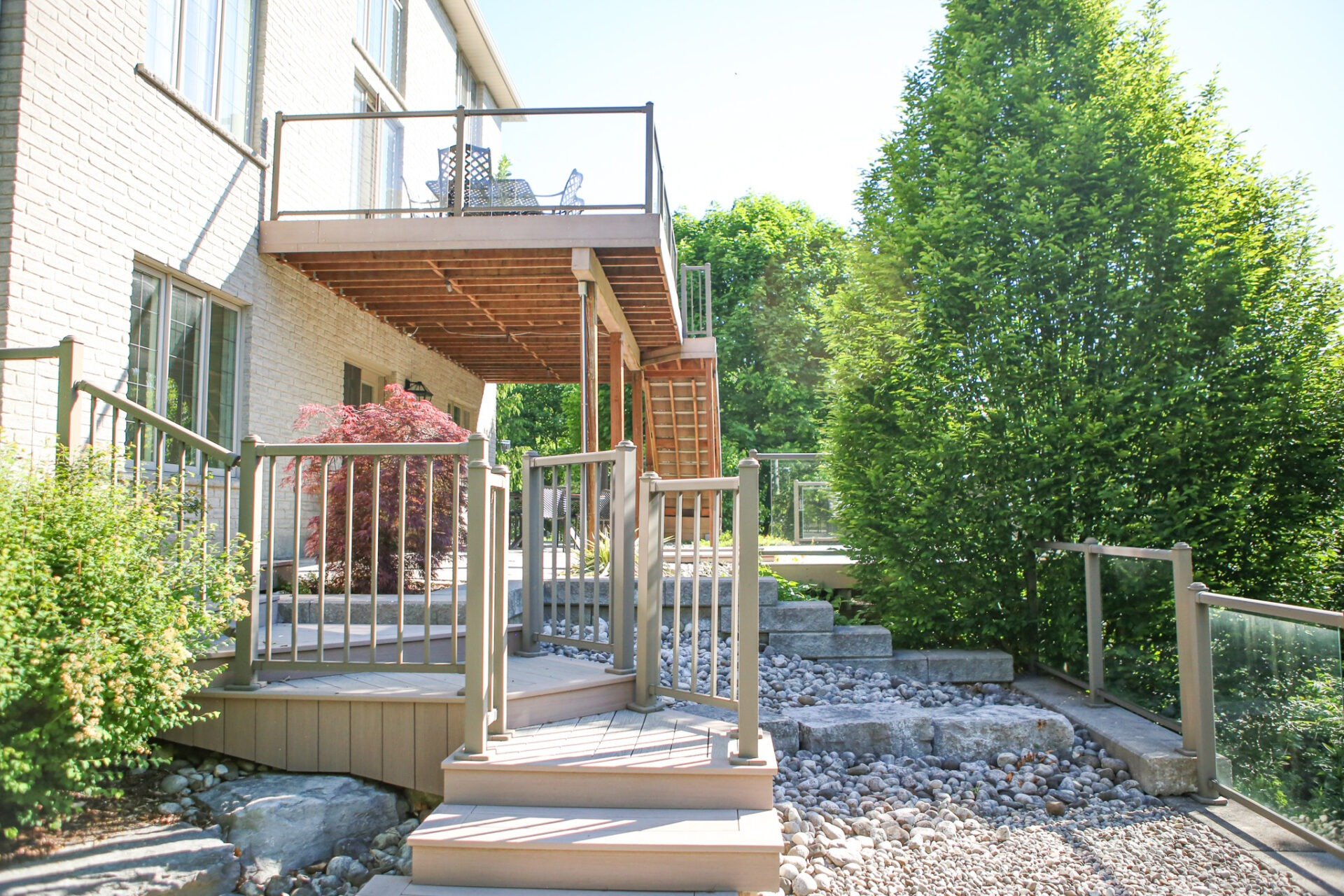
Low‑water landscaping isn’t just for drought‑prone regions. In Kitchener‑Waterloo, rainfall is generous but often arrives in heavy bursts that overwhelm city systems. You can embrace sustainable design by managing that water instead of wasting it. Start with rain gardens: shallow, planted depressions that capture runoff from roofs or driveways and allow it to soak into the ground. Native plants like black‑eyed Susan, Joe Pye weed, and switchgrass love these conditions and provide habitat for bees and butterflies. Installing rain barrels or cisterns at downspouts lets you store water for dry spells; the City of Kitchener even offers stormwater credits for residents who implement such practices.
Replace portions of the lawn with permeable pavers or gravel paths to reduce runoff and add texture. If you’re interested in xeriscaping, modify it for our climate by choosing drought‑tolerant perennials like coneflower, yarrow, and native grasses that also handle wet springs. Mulch your beds to retain moisture and suppress weeds, and use drip irrigation to deliver water directly to roots on hot summer days. By focusing on water management rather than strict water avoidance, you create a landscape that’s resilient, beautiful, and aligned with regional sustainability goals.
Smart Tech for Landscapes in 2026: What’s Worth Adding?
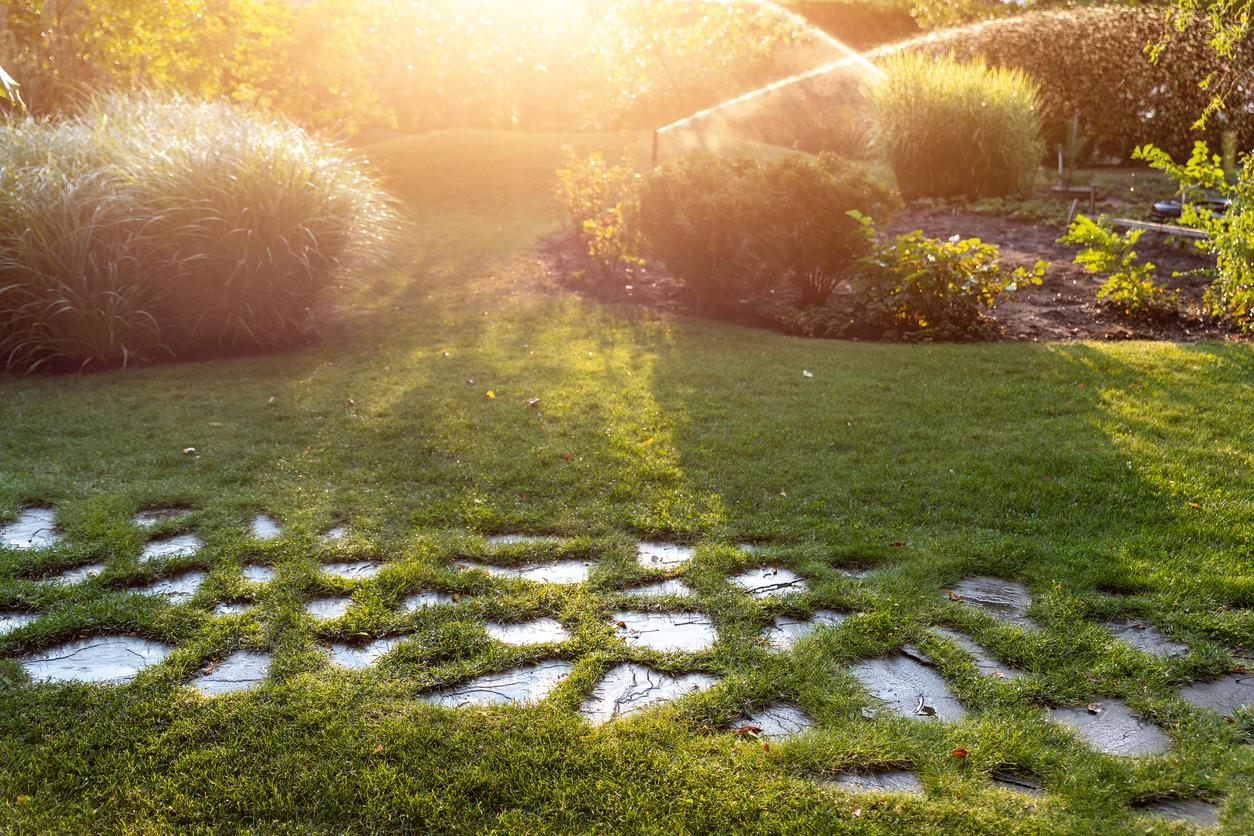
Technology continues to shape gardening, but not every gadget is a must‑have. For 2026, the most practical innovations are those that support plant health and reduce resource use. Smart irrigation systems use soil‑moisture sensors and local weather data to fine‑tune watering schedules, saving water and preventing over‑watering. Many models integrate with rain barrels or cisterns, automatically pausing when rain is forecast. Wireless lighting controls allow you to adjust brightness and timing from your phone, so you can create evening ambiance without leaving the couch or wasting energy when you’re away.
DIY gardeners are also adopting soil sensors that track pH, moisture, and nutrient levels and send alerts when conditions change. If you’re short on space, vertical gardens equipped with built‑in irrigation and sensors let you grow herbs and greens on a balcony wall. These technologies don’t replace good gardening practices; they complement them. The key is to choose tools that solve a specific need rather than buying every new device. Start with one smart feature like irrigation and see how it fits your lifestyle. Over time, you can add lighting, weather stations, or camera‑equipped bird feeders to monitor wildlife visits.
Edible Gardens & Native Wildflower Meadows

Growing your own food and supporting wildlife doesn’t mean sacrificing curb appeal. The 2026 forecast highlights edible landscapes and tamer meadows: designs where fruits, vegetables, and herbs mingle with ornamentals. Think of kale and Swiss chard with variegated foliage tucked among perennials, or dwarf fruit trees trained along a fence. Raised beds near the kitchen door make harvesting easy, while container gardens bring greens to small patios.
Beyond vegetables, homeowners are experimenting with unconventional crops like hardy kiwi, columnar apple trees, and espaliered peaches. At the same time, the wild meadow look is evolving. Instead of letting a yard go untended, designers are creating curated native plantings that blend grasses, coneflowers, bee balm, and milkweed for a relaxed feel that still looks intentional. Paths mowed through the meadow invite exploration and show that the landscape is cared for.
For the front yard, native shrubs such as dogwood and serviceberry provide structure, spring flowers, and fall berries. Interplanting native perennials with cultivated varieties adds color and extends bloom time. By mixing edible plants and native flowers, you create a resilient garden that feeds both your family and local pollinators, reflects the natural beauty of Waterloo Region, and stands out from the typical lawn‑centric yard.
Going Beyond Landscaping Trends for 2026
The landscape trends shaping Kitchener‑Waterloo combine innovation with a return to nature. Homeowners are prioritizing spaces that feel like extensions of their homes, yet respect ecological cycles. Outdoor rooms are becoming more integrated and weather‑adaptable, sustainable designs focus on capturing and reusing rainwater rather than simply reducing irrigation, and smart technology offers practical assistance instead of flashy distractions. Edible gardens and curated wildflower meadows prove that beauty, biodiversity, and utility can coexist on a suburban lot. As you consider your own yard, reflect on which of these trends resonate with your lifestyle. Maybe it’s time to add a rain garden under your downspouts, install a soil‑monitoring sensor in your vegetable bed, or swap a patch of grass for a pollinator‑friendly meadow.
By adopting ideas that align with your needs and local environment, you ensure your outdoor space remains vibrant in 2026 and beyond. If you need help translating these concepts into a cohesive design, Kerr & Kerr Landscaping is here to guide you with practical advice rooted in local experience.
Contact us today to get started.
Tags:

